Buyer's Guide - Entry Level, January 2005
by Jarred Walton on January 9, 2005 12:05 AM EST- Posted in
- Guides
Small Form Factor Considerations
One of the options that we didn't mention earlier was the possibility of a Small Form Factor (SFF) case. While normally that would add quite a bit to the price, there are a few options that offer very competitive prices and some people will prefer them to purchasing a separate case, motherboard, and/or power supply. Considering that the systems we've put together so far cost roughly $150 for the motherboard and case/PSU, that's our target price for a SFF case. We're willing to go as high as $200, however, as the reduced size may be desirable for a lot of people. There are a decent number of cases that fit that requirement, but we will limit ourselves to the ASUS, BIOSTAR, EPoX, Shuttle, and Soltek offerings for now. (We're still working on the full SFF roundup, in case you were wondering.) Due to pricing concerns, most of our selections will be from the socket 478 and socket A platforms. 754 and 775 are available, but they tend to cost too much for a budget system.  |
 |
| Click images to enlarge. | |
Socket 478 SFF Alternative: ASUS Terminator T2-P or T2-P Deluxe
Price: $137 or $162/$220 shipped
Providing one of the best values for a SFF system, the ASUS T2 line includes a ton of features. Integrated graphics come standard via the 865G chipset, or if you want to look at the T2-R, you could get the ATI 9100IGP graphics - as we mentioned in the motherboard section, the ATI 9100IGP provides better graphics support, but worse overall CPU performance. Sound and networking are standard fare, along with two DIMM slots. The Deluxe model adds in 802.11B WLAN, a gigabit Ethernet (GbE) connection, firewire, a flash card reader, and a radio tuner, along with an enhanced front panel with controls for the radio and CD functions. Both models include a floppy drive.
The case looks good and runs reasonably quiet, but there are a few drawbacks. First, the hinged front covers look nice, but they feel very flimsy; they're not spring loaded, and they're made of cheap plastic. If you don't handle your computer with care, it would be relatively easy to break off some of the plastic "doors". Another problem is that the Deluxe model is available in two versions, so you'll have to make sure that you get the right one. The cheaper version does not include the wireless networking, firewire, GbE, or a CD drive while the "commercial" version adds these extras. The power supply is only rated at 200W, so running a high-end graphics card like a 6800GT or X800 Pro could prove troublesome, but we can attest that the 9800 Pro/XT work without problems. Finally, the case is not a truly small SFF design - it's really about half the size of a standard mini-tower and 50% larger than most other SFF cases. Still, it's not a bad value overall, regardless of which model you choose.
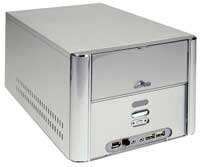 |
 |
| Click images to enlarge. | |
Socket A SFF Alternative: BioStar iDEQ 210VB or 200N
Price: $172 or $207 shipped
For socket A from BioStar, we have two options that meat our criteria. The cheaper option is the 210VB, which uses the VIA KM400A chipset and includes the UniChrome integrated graphics. It also includes firewire, USB, SATA, audio, and 10/100 Ethernet. The more expensive 200N is the preferred version, not only because it uses the superior Nforce2 chipset with MCP-T, but also because it includes two VGA ports powered by a GeForce 4MX core and we prefer the silver aluminum case to the black one. Otherwise, they are very similar in design and features. Again, high-powered graphics cards might push the capabilities of the included 200W PSU, but then a high-powered graphics card would be overkill for an aging Athlon XP/Sempron system. Note that this motherboard supports a maximum bus speed of 333 MHz, so the 400 MHz bus Athlon XP 3000+ and 3200+ are not an option. Given their price, however, we don't think that many people would really consider them anyway.
Socket A SFF Alternative: EPoX Mini Me EP-EX5300NR
Price: $221 shipped
Socket 478 SFF Alternative: EPoX Mini Me EX5-300S
Price: $192shipped
These two cases look very similar internally and externally, but there are a few major differences. First is the CPU socket type, of course, which dictates many of the features. The socket A model also includes a remote control and 250W PSU (instead of a 200W), but it lacks support for SATA - that's important, considering our hard drive recommendations; get a Seagate or Samsung IDE drive instead if you choose the EX5300NR system. Beyond that, features are similar to what other cases offer: firewire, audio, LAN, USB and integrated graphics - the Nforce2 IGP's GF4MX for the AMD system and the 865G's Extreme Graphics 2 on the Intel platform. Both models do not support a floppy drive, although they also come with a flash card reader in the 3.5" bay. On the bottom of the front face is a moderately large display that can be configured to show system parameters; some may like it, and others may find it distracting, as it does tend to be a little bright at face level. Similar to the BioStar cases, only 266 and 333 FSB Athlon XP/Sempron are supported on the socket A model.
Finally, a word of caution: this is a case that may be too small for its own good, as fitting in a moderate size graphics card can bump into the hard drive, causing it to warp the graphics card slightly. We're not particularly thrilled by that prospect, so we would recommend that users who intend to add a decent graphics card to their system look elsewhere. Given the price, features, and diminutive size - remember that in the SFF world, smaller is generally more expensive - it's a decent option, provided that you keep the above comments in mind.
Socket 754 SFF Alternative: Shuttle XPC SK83G
Price: $207 shipped
As our sole representative of the socket 754 platform, we have the Shuttle SK83G. Shuttle also has a few other moderately-priced offerings that some might find interesting, but they tend to cost more than some of the competitors and offer less in the way of features. For example, the SB65G2 is a decent model that lacks integrated graphics, so a separate graphics card would be required. The SN45GV2 is similar in that it uses the Nforce2 Ultra chipset and requires discrete graphics. On the low end, we have the SB51G that includes integrated graphics, but uses the 865GE chipset instead of the slightly more powerful 865G. None of them are terrible choices, but they also don't have much to set them apart in the budget sector.
Returning to the SK83G, let's look at the features. It is reasonably priced and includes a 240W PSU, integrated UniChrome Pro graphics courtesy of the VIA K8M800 chipset, plus all of the other usual suspects: firewire, USB, SATA (plus RAID), audio and networking. An S-Video connection is supported in addition to the VGA connector, which makes this an interesting option for a Home Theater PC if you're interested. Something that other cases neglect is the inclusion of a cover for the 3.5" external bay, should you decide to forego the floppy drive or use that bay for a second hard drive.
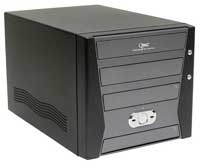 |
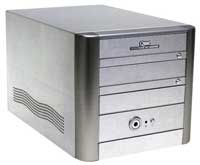 |
| Click images to enlarge. | |
Socket A SFF Alternative: Soltek QBiC EQ3704GD or EQ3705A
Price: $177 or $192 shipped
Wrapping things up with our SFF suggestions, we come to Soltek and their QBiC line. There are several systems that fall into the $200 and below range, but we aren't going to bother with the VIA C3 options, so we're left with the versions based on the KM400A VIA chipset and the NVIDIA Nforce2 IGP. The 3704 is available in several different color schemes, of which we selected the gray/black model. It's a little cheaper than the 3705, but you also lose some performance on the CPU and graphics fronts. In other areas, however, you gain some features: the 3704 includes GbE as well as SATA/RAID, while the 3705 lacks these features. As with the EPoX system, if you are considering the 3705, make sure that you get an IDE drive instead of an SATA drive. It's a personal preference, but we also prefer the look of the aluminum 3705 case. Otherwise, features are the same as the other options: firewire, USB, audio, and network. The Soltek models also include a larger 250W PSU, and you can even fit two optical drives in each case. Using the bottom 5.25" drive bay for a second optical drive will prevent the use most PCI cards, however.


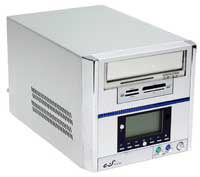
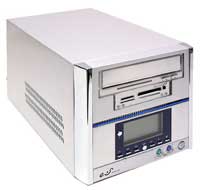
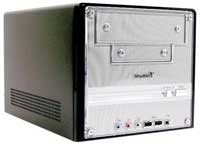








31 Comments
View All Comments
edlight - Sunday, January 9, 2005 - link
Warning for Corsair Value Select: If you want to run dual channel get one of their dual channel kits containing a matched pair. I bought one stick and another a month later, and they are totally different and won't run dual channel at all on my Asus A7V880. In fact, one is single sided and one dual sided. The memory isn't made by Corsair at all.justly - Sunday, January 9, 2005 - link
I really don't have a problem if you prefer the Nforce 3-250 chipset BUT to call the "performance and reliability" of either VIA and SiS "questionable" for a budget system seems a bit (actually quite a bit) narrow minded.If this where a overclocking or performance guide I would have less of a complaint, but for a budget guide I think you should elaborate on why these chipsets are so "questionable". Has Anandtech pionted out these "performance and reliability" issues in any reviews of either VIA or SiS, because the ony complaint I can recall had to do with overclocking.
You even mention that a Nforce 3-250 board (Epox) has "memory compatibility issues" so Nforce 3-250 is not void of "performance and reliability" issues either.
A BUDGET GUIDE is about two things "reliability and cost", performance is a "distant concern" (does this sound familiar? it should its on the first page). So when it comes to the motherboard why is "performance" now a concern (especially when performance differances between A64 motherboards seem trivial compared to other components)?
If I sound upset because of this then you are correct. I offen hear review sites hope for more competition in the chipset market (things like wishing some board manufacturer would try to make a performance board with a SiS chipset) and then I read things like this. If you really want to see some competition then the least you could do is not cut them from the market that they are targeting with their product without explaining why.
ChineseDemocracyGNR - Sunday, January 9, 2005 - link
"Intel has socket 478 parts, and these are often cheaper than the more recent platforms, but longevity is something of a concern."I agree that longetivy is a concern, but the socket 478 platform is not necessarily cheaper. Intel released the Celeron D in LGA775, starting with the 2.53GHz model (the lower ones are to be discontinued in Februrary according to the Inquirer). The LGA775 is a "J" version, which adds NX support for less than $5 more compared to the socket 478 version.
Given this, I would switch the Intel budget system to the Celeron D 325J, a little more expensive than the 320. There are cheap LGA775 motherboards available, like the ECS 661FX-M7 ($53.50) and the ASRock 775V88 ($57).
Another thing I would like to comment on is the Radeon 9600Pro suggestion. Newegg is selling 400/446 Sapphire cards as 400/600 (without saying it's an Advantage card) so be careful. I would suggest these for budget systems:
SAPPHIRE ATI RADEON 9000PRO Video Card, 64MB DDR, 128-bit $46 shipped
ABIT ATI RADEON 9550 Video Card, 128MB DDR, 128-Bit, DVI/TV-Out, 8X AGP, Model "R9550-Guru " -RETAIL $80 shipped
This ABIT card comes with 3.6ns and overclocks to 500/600 (9600XT) more often than not.
bupkus - Sunday, January 9, 2005 - link
I just bought the Biostar 210V and according to their website http://www.biostar-usa.com/ideqdetails.asp?model=i... this model does support a 400 fsb. Don't expect to overclock an AXP as there is neither a voltage nor a multiplier setting in the bios. The fsb for your cpu is set using jumpers which I hope also changes the AGP/PCI ratio as I'm told are unlocked. BTW, newegg had this model for fifteen dollars less than it is now, so look for possible sale prices. Currently $154.Avalon - Sunday, January 9, 2005 - link
You can get the Samsung 997DF 19" monitor for $202 shipped at techonweb.com, I bought it there two weeks ago. If the price hasn't changed....then I'd think $202 > $215 in terms of savings.Glassmaster - Sunday, January 9, 2005 - link
Great guide Jarred!Though I would rather not have seen the RAIDMAX PSU in there, it probably won't be as big a deal for the entry level budget system. It was good to see Fortron Source being mentioned too, as a cheap but reliable PSU alternative.
You might also point people in the direction of the excellent power supply guide by computerpro3 of the hardforums. http://www.hardforum.com/showthread.php?t=792566
He lists the brands to stay away from, and those worth buying, along with links to newegg for his specific recommendations.
Glassmaster.
Spacecomber - Sunday, January 9, 2005 - link
I always enjoy reading these system guides; so, thanks for this latest one.A couple of minor comments.
I don't think that the 120mm fan on the Antec SLK1650 cases is temperature controlled. At least one of the fans in the power supply is; so, perhaps that is what you were thinking. Nevertheless, the 120mm fan is fairly quiet and becomes virtually silent, if you use 7 volts for it.
I have been a big fan of the Seagate drives, because of their 5 year warranties (started at the time when there seemed to be a trend toward 1 year warranties on hard drives). While my initial experience of these drives was how quiet they were, I have been hearing other complain of getting drives that were not that quiet. My most recent Seagate purchase was a 120GB PATA model, and I too noticed that it seemed to buzz relatively loudly when it was seeking. I don't think it is so much how loud the noise is, but it has a kind of annoying quality to it.
Apparently, Seagate is involved in a lawsuit that alleges that Seagate stole their accoustic management technology from someone else. As a result, they have disabled this feature in their current line of drives. (You can use something like Hitachi's Feature Tool to see that accoustic management doesn't show up as an option on these drives.)
So, while Seagate continues to offer a 5 year warranty, which nobody else does (except the WD Raptors), they no longer should be looked to when a quiet drive is one of your criteria, imo.
Space
Pollock - Sunday, January 9, 2005 - link
I think you should forgo the SATA Seagate and go with the IDE version, which I've seen as cheap as $59-$62, saving you $7-10 for a pointless upgrade.bigpow - Sunday, January 9, 2005 - link
Entry Level Budget & Entry Level Performance labels should make the conclusion less confusing.kmmatney - Sunday, January 9, 2005 - link
Great review. The graphics section was very good, as well as the SFF section. Nice work.Although you did mention it, I think the Athlon XP-M is the best budget cpu, with a Barton core and unlocked multiplier. It is more expensive than the Sempron, but you can team it up with a $42 Asrock motherboard and overclock it 3200+ speeds easy, even with cheapo RAM.